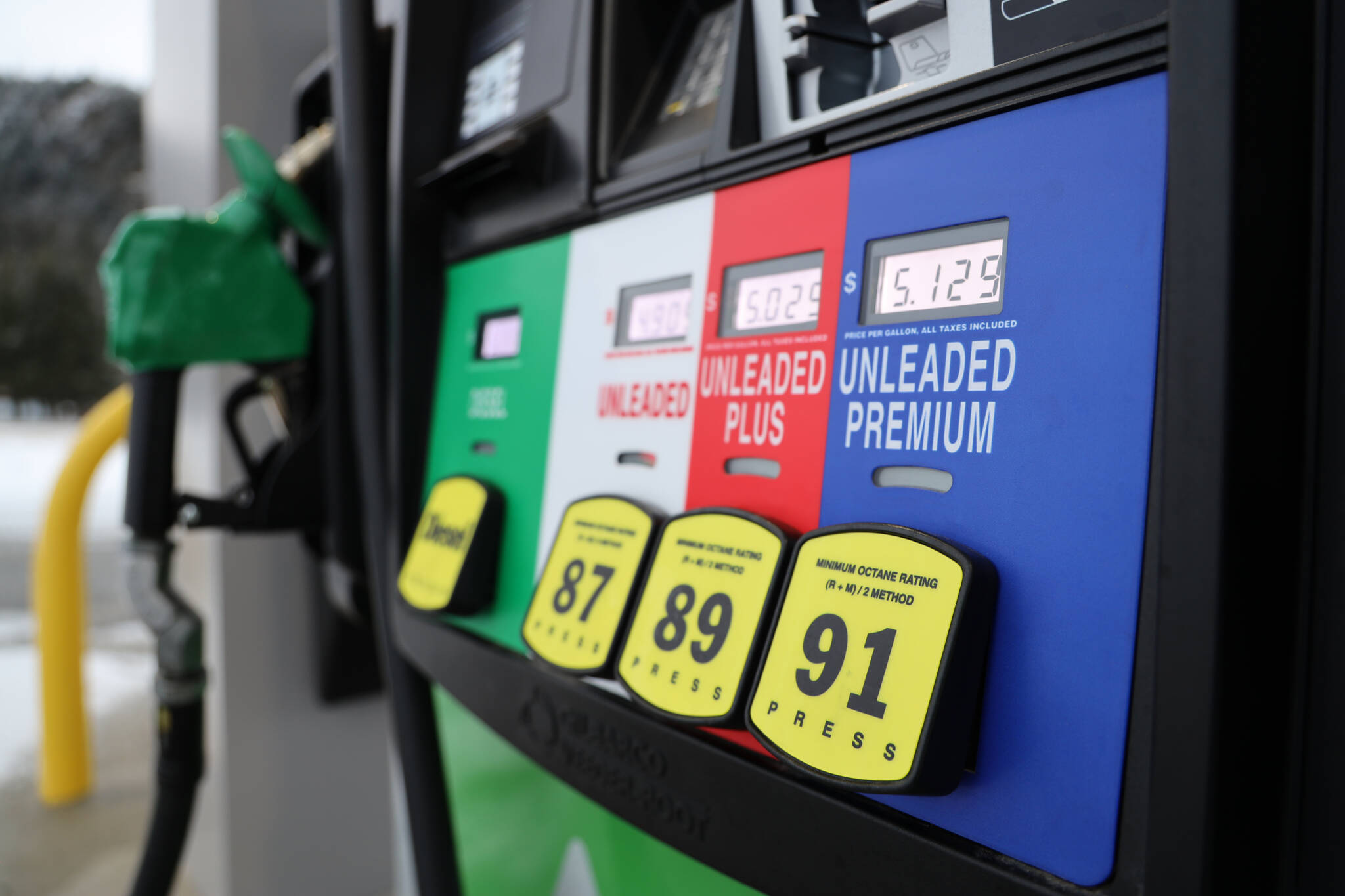Oil prices hit their lowest price of the year a week before Gov. Mike Dunleavy releases his proposed state budget for next year, increasing the possibility of the state incurring a deficit for the current year and a less merry spending plan than administration officials projected when prices were peaking earlier this year.
On the other hand, consumers have cause for good cheer as nationwide gas prices are now cheaper than a year ago, dropping about one-third from their $5 a gallon average. The news isn’t quite as merry in Juneau, where prices for regular unleaded were hovering around $4.90 a gallon Friday.
chart
The price of Alaska North Slope crude oil dropped to $74.22 a barrel on Wednesday, far below the $87 the state needs to average to break even for the fiscal year. The state Department of Revenue’s most recent projection on Nov. 16 is for an average price of $91.58 this year – well below the $101 forecast on March 15 when this year’s budget debate was ongoing – and $80.08 next year.
Updates to those assessments are underway and expected to be available at the same time Dunleavy releases proposed budget on Dec. 15 as mandated by law. Brian Fechter, deputy commissioner of the department of revenue, said Thursday he can’t give an estimate of how this month’s forecast might compare to last month’s.
“I think it’s a little premature to say for sure what’s going to shake out,” he said.
Officials with the governor’s office, as well as the Office of Management and Budget, declined to comment on what direction is being provided to state departments as they draft their proposed budgets ahead of next week’s unveiling.
The current year’s budget, crafted when oil prices were peaking following Russia’s invasion of Ukraine, included rosy provisions including a $3,284 Permanent Fund Dividend, more than $1.2 billion to “forward fund” K-12 education a year ahead of time and depositing $1.6 billion into savings. But the deposit will not occur if the average price of oil drops below $103, and forward funding will be scaled back proportionally as prices drop to the break-even point.
“The gist of it is the Legislature was pretty smart in the way it structured the budget for the current year,” Fechter said. “They put a bunch of triggers in for different price levels.”
A multitude of global factors are causing uncertainty in oil prices. They include extended sanctions and a price cap on Russian oil exports, the possibility of economic slowdowns reducing demand for oil, and lesser current events such as an oil spill in Kansas forcing the shutdown of the Keystone pipeline.
Brad Keithley, an oil and gas expert in Alaska for 35 years who is currently managing director of Alaskans for Sustainable Budgets, wrote in a series of daily ongoing updates comparing the state’s prices and production to global markets that the federal Energy Information Administration and other stakeholders seem to agree that falling global inventories of oil in the near term are likely to push prices up somewhat again.
”Even if today’s drop in futures prices held, the annual arithmetic average price would remain slightly above the (budget reserve) depletion point,” he wrote earlier this week. “But (because) of the first half (of the year) production lag, revenues could end up slightly below.”
A cap of $60 a barrel on Russian oil, which sells at much lower prices than Alaskan and some other suppliers, raised alarms about the country cutting exports off entirely and leading to shortages, but so far prices and reactions have been muted, according to reports. Russian President Vladimir Putin said Friday the price cap corresponds with the level at which Russia was already selling its oil – about $53 a barrel during the day – while European and U.S. officials said the cap is nonetheless helping Asian refiners negotiate lower prices.
While the drop in oil prices may be bad news for state budget officials, the nationwide price for a gallon of gas dropped to $3.33 as of Thursday, according to the American Automobile Association. Alaska is among three states seeing the second-highest drop during the past week of 25 cents per gallon, trailing California’s drop of 28 cents.
• Contact Mark Sabbatini at mark.sabbatini@juneauempire.com

